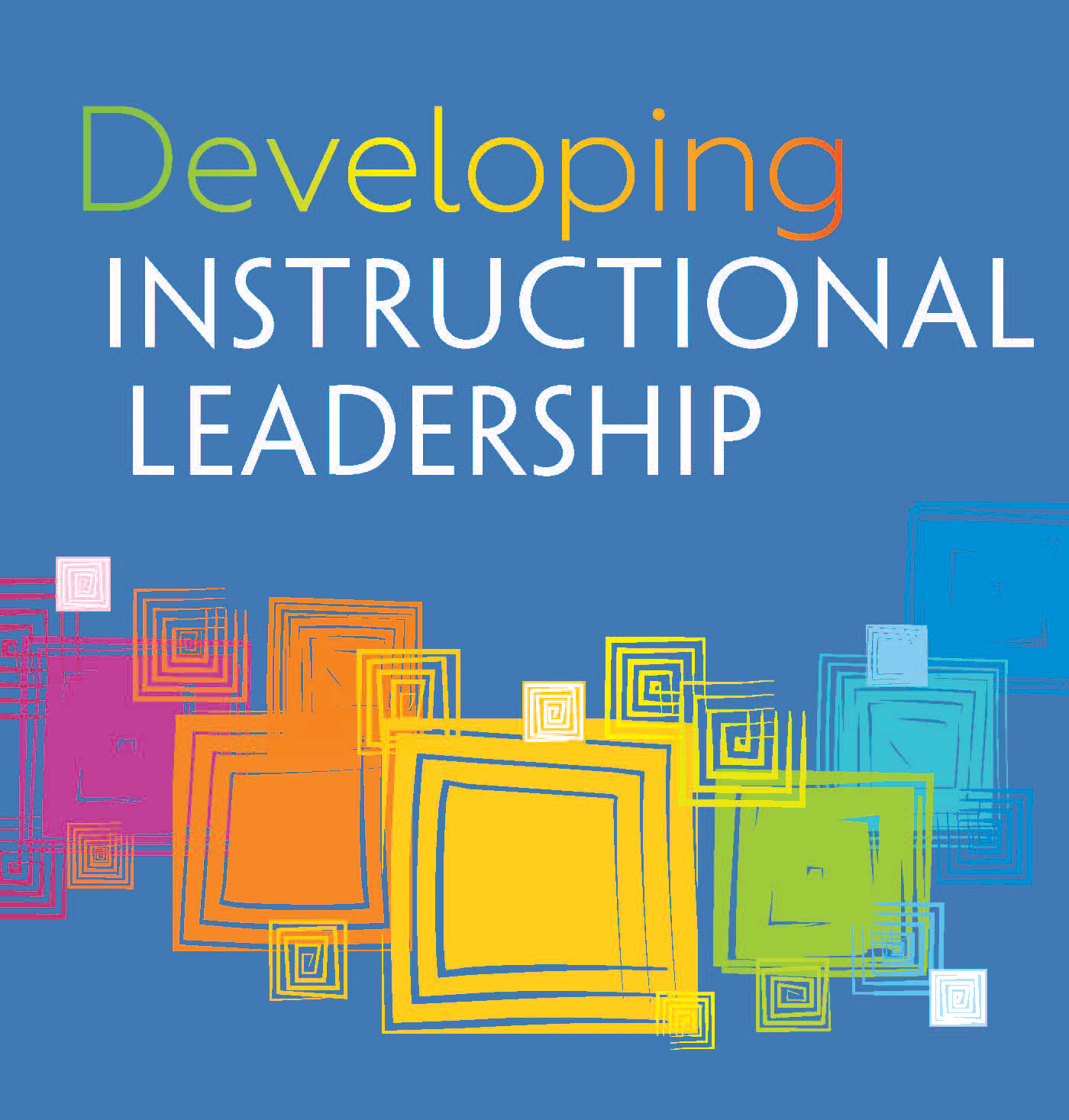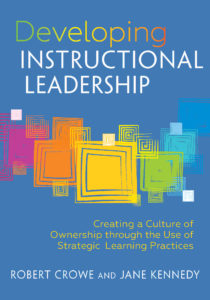Share this article.
An article for school administrators and aspiring administrators
Dear educator, you have the power to turn your school into whatever you want it to be—your dream school, in other words. Research tells us so. According to Edutopia’s “Teacher Development Research Review,”
“Leadership is second only to teaching among school-related factors that can improve student achievement, and it tends to show greatest impact in traditionally underserved schools.”
Of all the skills you need to succeed, the most vital, in terms of increasing academic achievement, is that of instructional leadership. And the skill of instructional leadership is made up of actions that can be seen and heard. We believe that those actions of instructional leadership can be developed.
That’s why we wrote our book, Developing Instructional Leadership, for you. We show current principals, assistant principals, and future administrators how to turn your dream school into your reality.
And because it is our mission at Elevated Achievement to support educators, here is an excerpt from our book that can get you started developing your instructional leadership.
A Framework for Instructional Leadership
 This book is organized around the research that delineates the features of effective instructional leadership and its role in improving student achievement (Leithwood et al., 2004; Vega, 2015; Vescio, Ross, and Adams, 2008; Wallace Foundation, 2013). This research delineates the features into four distinct areas.
This book is organized around the research that delineates the features of effective instructional leadership and its role in improving student achievement (Leithwood et al., 2004; Vega, 2015; Vescio, Ross, and Adams, 2008; Wallace Foundation, 2013). This research delineates the features into four distinct areas.
- “A vision of academic success for all students based on high expectations.” This is the action of determining an initiative whose successful implementation will increase student achievement. We call this the curriculum of the initiative.
- “Support and training to promote continual professional learning.” This is the action of determining the support for the implementation of the initiative. We call this the instruction of the initiative.
- “Data to track and promote collaborative inquiry and practices that improve student learning.” This is the action of determining the monitoring system for the implementation of the initiative. We call this the assessment of the initiative.
- “A safe and cooperative climate for learning.” This is the action of building a community of leaders. We call this the climate of the initiative.
Although there are hundreds of actions a principal makes in a day, this book focuses on those actions in curriculum, instruction, assessment, and climate that increase the opportunities for learning—which is the basis of instructional leadership. Our book is organized around these four areas.
Curriculum – The Value of Clear Learning Expectations
We share the actions of instructional leadership in curriculum based on the understanding that all support and learning is driven by a clearly defined initiative with measurable and achievable outcomes. This chapter will therefore clarify, “What is the initiative?”
In order to lead the successful implementation of an initiative, you need to understand and share the answers to the following questions:
- What is the initiative?
- What is the purpose of the initiative?
- What are the success criteria of the initiative?
- How will this information be shared with the teachers?
The actions that support the answers to these questions are the following:
- Clarify the goals of the initiative.
- Integrate the goals of the initiative with other expectations.
- Provide the resources needed to implement this initiative.
- Share this information with the staff.
In other words, your role as principal is to lead the implementation using the actions of instructional leadership in curriculum. This chapter will be your guide. When you finish this chapter you will know how to determine the goals of an initiative focused on student achievement and lead its implementation. You will know how to develop instructional leadership in curriculum.
Instruction – The Value of Adult Learning Strategies
We share the actions of instructional leadership in instruction based on the understanding that all support and learning is driven by highly engaging, effective, and efficient instruction. This chapter will therefore clarify, “How will the initiative be supported?”
In order to lead the successful implementation of an initiative, you need to understand and share the answers to the following questions:
- What support will the teachers receive?
- When will the teachers receive support?
- How will the teachers work together to implement the initiative?
- How will this information be shared with the teachers?
The actions that support the answers to these questions are the following:
- Clarify how the initiative will be supported and implemented.
- Establish a plan for professional learning opportunities.
- Schedule professional learning opportunities directly related to the initiative.
- Share this information with the staff.
In other words, your role as principal is to lead the implementation using the actions of instructional leadership in instruction. This chapter will be your guide. When you finish this chapter you will know how to support your teachers in implementing the initiative. You will know how to develop instructional leadership in instruction.
Assessment – The Value of Monitoring Learning Strategies
We share the actions of instructional leadership in assessment based on the understanding that all support and learning is driven by regular assessment that guides decision making. This chapter will therefore clarify, “How will the initiative be monitored?”
In order to lead the successful implementation of an initiative, you need to understand and share the answers to the following questions:
- How will the teachers know that they have implemented the initiative at a high level?
- How will the teachers receive feedback regarding the progress of the implementation of the initiative?
- What supports will the teachers receive if they are struggling?
- How will this information be shared with the teachers?
The actions that support the answers to these questions are the following:
- Confirm the success criteria for the initiative.
- Establish a process for monitoring the implementation of the initiative.
- Establish a method for continued support for implementation.
- Share this information with the staff.
In other words, your role as principal is to lead the implementation using the actions of instructional leadership in assessment. This chapter will be your guide. When you finish this chapter you will know how to monitor the implementation of the initiative. You will know how to develop instructional leadership in assessment.
Climate – The Value of a Professional Learning Environment
We share the actions of instructional leadership in climate based on the understanding that all support and learning is driven by a positive climate. This chapter will therefore clarify, “What is your role in the initiative?”
In order to lead the successful implementation of an initiative, you need to understand and share the answers to the following questions:
- What is the teachers’ role in the implementation of the initiative?
- How will the teachers support each other in the implementation of the initiative?
- How will the teachers be supported to take risks in the implementation of the initiative?
- How will this information be shared with the teachers?
The actions that support the answers to these questions are the following:
- Identify the role of each stakeholder in the implementation of the initiative.
- Foster cooperation among and between stakeholders.
- Establish a plan for collaboration.
- Share this information with the staff.
In other words, your role as principal is to lead the implementation using the actions of instructional leadership in climate. This chapter will be your guide. When you finish this chapter you will know how to build school-wide collaboration around the implementation of an initiative. You will know how to develop instructional leadership in climate.
Ensuring Success
In addition to sharing the actions of instructional leadership in our book, we also share how you can ensure successful implementation through differentiation for adult learners, question-driven feedback, and effective communication.
With each new initiative the teacher must be treated as a learner who must receive support specific to their needs, even those who are highly educated in the schema of teaching and learning. Each learner needs to have their support differentiated in terms of how they understand the initiative, receive the support, and are held accountable. In other words, your role as principal is to differentiate the support offered to each teacher, as needed, to increase the probability of a successful implementation of the initiative.
We share how you can deliver feedback that allows the teacher to take ownership of their learning. An effective principal knows that the success of any initiative begins with setting the context for teacher ownership. An effective principal also knows that each initiative must be monitored on an ongoing basis to understand how each teacher is implementing the requested action. The most effective method for a principal to monitor the teacher’s work is through a question-driven process. This method of discourse allows the teacher to continue to own the process by explaining, clarifying, and reflecting on the decisions they are making to implement the initiative. In other words, your role as principal is to help teachers become more effective and efficient decision-makers regarding classroom practice by asking teachers how they make decisions and support metacognition through the articulation of their thinking.
We share how to consistently communicate expectations and opportunities. An effective principal knows that what they say and how they say it is less important than what their teachers hear and how they hear it. Thus, one of the most important aspects of instructional leadership is to continuously, purposefully, and intentionally share information with the staff in a variety of ways. This is what we call conceptual redundancy. If teachers are to effectively implement the initiative, they deserve to hear information over and over—as many times as needed for each individual—until they clearly understand the work expected of them. In other words, your role as principal is not to communicate but to overcommunicate. And to overcommunicate in a way that allows each listener to hear it.
How Instructional Leadership Gives You Control
Not one of these decisions regarding curriculum, instruction, assessment, climate, differentiation, feedback, and communication can be made in isolation. Each decision will impact other decisions. It is your job to decide how these areas work together to ensure that there is the highest likelihood of successful implementation. Your greatest power lies in your decision-making. And if your decision-making is based on the actions of instructional leadership, you will find that increased ownership leads to elevated student achievement.
Our book, Developing Instructional Leadership, is here to support you the entire way.
Continue the Learning
Check out these articles and resources to continue your learning about this topic…
The Learning Brief
In this article you learned…
- Instructional leadership is a skill that administrators can develop and is critical to elevating student achievement.
- The explicit actions of instructional leadership in curriculum, instruction, assessment, and climate.
- That you are not alone in this endeavor and can find additional support for developing instructional leadership from us. (elevatedachievement.com)
Can you imagine building an environment full of motivated, engaged, and eager students who own their learning?
We can.


